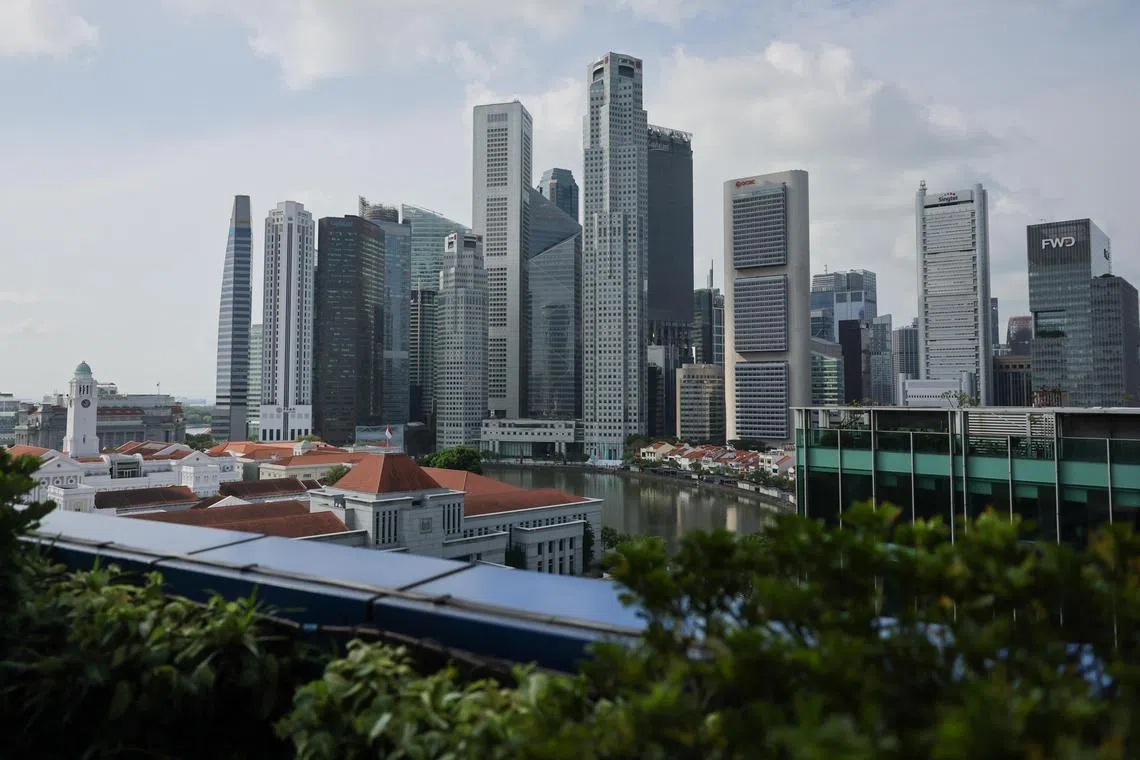Slow payments by Singapore firms fall to 2-year low: SCCB
Sign up now: Get ST's newsletters delivered to your inbox

In Singapore's services sector, slow payments decreased 0.15 percentage point to 42.75 per cent quarter on quarter.
ST PHOTO: GIN TAY
Follow topic:
SINGAPORE – The payment performance of local firms continued to improve for the third straight quarter, based on data from the Singapore Commercial Credit Bureau (SCCB) released on May 20.
“Payment delays have, in particular, hit a near two-year low since Q2 2022, despite a slight deterioration in both the retail and wholesale sectors,” said SCCB chief executive Audrey Chia.
Slow payments were down 0.03 percentage point at 44.12 per cent compared with the previous quarter, and down 0.1 percentage point versus the same period in 2023.
Prompt payments improved by 0.02 percentage point quarter on quarter to 41.07 per cent in the first quarter and were up 0.04 percentage point on the year.
A payment is classified as “prompt” when 90 per cent or more of total bills are paid within the agreed payment terms, while slow payment refers to less than 50 per cent of total bills being paid within the agreed terms
Partial payments, meanwhile, inched up by 0.01 percentage point quarter on quarter to 14.81 per cent in the first quarter. Year on year, partial payments were higher by 0.06 percentage point.
Partial payment refers to when between 50 per cent and 90 per cent of total bills are paid within the agreed payment terms.
Three out of five industries studied recorded a drop in slow payments quarter on quarter, namely construction, manufacturing and services.
Year on year, the construction, retail and services sectors observed improvements in payment performance as slow payments decreased.
The construction sector registered a 0.12 percentage point drop in slow payments to 55.2 per cent from the previous quarter, with the heavy construction sector recording the largest drop. Year on year, payment delays for the overall constructor sector were down 0.45 percentage point.
In the services sector, slow payments decreased 0.15 percentage point to 42.75 per cent quarter on quarter. Compared with the same period a year ago, payment delays were 0.4 percentage point lower. The hotels and accommodation sub-sector registered the largest decrease in payment delays.
Slow payments in the manufacturing sector fell for the second straight quarter as payment delays by manufacturers of electronics, chemicals and transportation equipment eased. Slow payments fell 0.02 percentage point to 39 per cent in the first quarter from the previous quarter, but were 0.28 percentage point higher year on year.
The retail sector, meanwhile, recorded a 0.08 percentage point increase in slow payments to 43.26 per cent as payment delays by automotive and vehicle retailers rose. Year on year, payment delays were 0.04 percentage point lower.
Lastly, the wholesale sector registered an increase in slow payments both quarter on quarter and year on year. Payment delays were up 0.05 percentage point at 40.4 per cent from the previous quarter, and up 0.1 percentage point from the same period in 2023.
“With rising cost pressures, firms will have to continue to exercise credit vigilance and adopt good cash flow management practices,” Ms Chia said. THE BUSINESS TIMES

